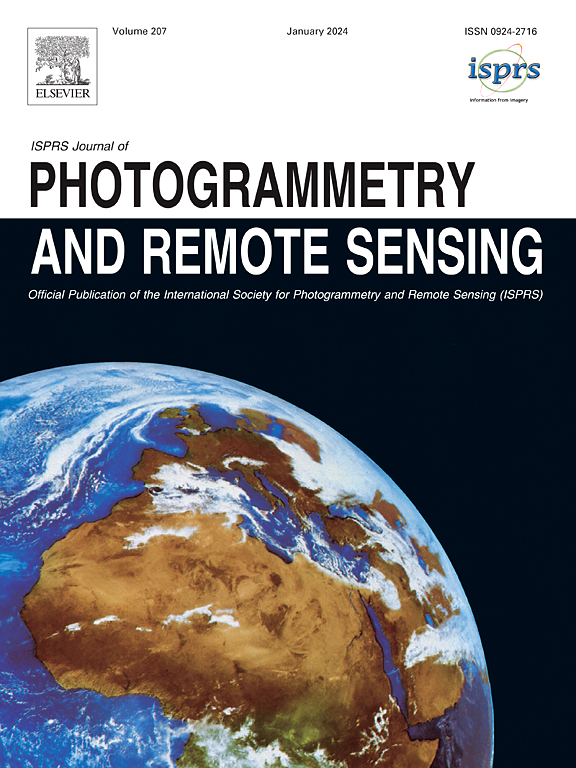Learning transferable land cover semantics for open vocabulary interactions with remote sensing images
IF 10.6
1区 地球科学
Q1 GEOGRAPHY, PHYSICAL
ISPRS Journal of Photogrammetry and Remote Sensing
Pub Date : 2025-02-01
DOI:10.1016/j.isprsjprs.2025.01.006
引用次数: 0
Abstract
Why should we confine land cover classes to rigid and arbitrary definitions? Land cover mapping is a central task in remote sensing image processing, but the rigorous class definitions can sometimes restrict the transferability of annotations between datasets. Open vocabulary recognition, i.e. using natural language to define a specific object or pattern in an image, breaks free from predefined nomenclature and offers flexible recognition of diverse categories with a more general image understanding across datasets and labels. The open vocabulary framework opens doors to search for concepts of interest, beyond individual class boundaries. In this work, we propose to use Text As supervision for COntrastive Semantic Segmentation (TACOSS), and we design an open vocabulary semantic segmentation model that extends its capacities beyond that of a traditional model for land cover mapping: In addition to visual pattern recognition, TACOSS leverages the common sense knowledge captured by language models and is capable of interpreting the image at the pixel level, attributing semantics to each pixel and removing the constraints of a fixed set of land cover labels. By learning to match visual representations with text embeddings, TACOSS can transition smoothly from one set of labels to another and enables the interaction with remote sensing images in natural language. Our approach combines a pretrained text encoder with a visual encoder and adopts supervised contrastive learning to align the visual and textual modalities. We explore several text encoders and label representation methods and compare their abilities to encode transferable land cover semantics. The model’s capacity to predict a set of different land cover labels on an unseen dataset is also explored to illustrate the generalization capacities across domains of our approach. Overall, TACOSS is a general method and permits adapting between different sets of land cover labels with minimal computational overhead. Code is publicly available online1.
求助全文
约1分钟内获得全文
求助全文
来源期刊

ISPRS Journal of Photogrammetry and Remote Sensing
工程技术-成像科学与照相技术
CiteScore
21.00
自引率
6.30%
发文量
273
审稿时长
40 days
期刊介绍:
The ISPRS Journal of Photogrammetry and Remote Sensing (P&RS) serves as the official journal of the International Society for Photogrammetry and Remote Sensing (ISPRS). It acts as a platform for scientists and professionals worldwide who are involved in various disciplines that utilize photogrammetry, remote sensing, spatial information systems, computer vision, and related fields. The journal aims to facilitate communication and dissemination of advancements in these disciplines, while also acting as a comprehensive source of reference and archive.
P&RS endeavors to publish high-quality, peer-reviewed research papers that are preferably original and have not been published before. These papers can cover scientific/research, technological development, or application/practical aspects. Additionally, the journal welcomes papers that are based on presentations from ISPRS meetings, as long as they are considered significant contributions to the aforementioned fields.
In particular, P&RS encourages the submission of papers that are of broad scientific interest, showcase innovative applications (especially in emerging fields), have an interdisciplinary focus, discuss topics that have received limited attention in P&RS or related journals, or explore new directions in scientific or professional realms. It is preferred that theoretical papers include practical applications, while papers focusing on systems and applications should include a theoretical background.
 求助内容:
求助内容: 应助结果提醒方式:
应助结果提醒方式:


